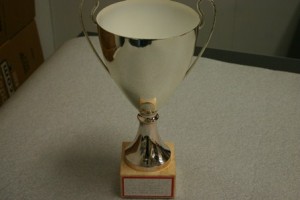Here at the museum we have multiple projects that are handled not only by our regular staff, but also our interns. While working on his summer internship project of inventorying and creating a better storage solution for the museum’s trophy collection, Cameron Anderson stumbled upon an interesting problem. The problem was with the identification of the material used to make the base of an International contest trophy. Since he is creating new storage solutions, he must be aware of what kinds of material he is working with. Through his personal research, he narrowed the type of stone down to two types, granite and marble.

Curiosity got the better of Cameron, even though the storage solution would be the same for both of the stone types; he decided to investigate a way to identify the stone. A quick trip to a geological website gave him a way to test the stone. It turns out that marble is a non-porous stone, so with a small droplet of water on the unpolished side of the trophy, he could identify which stone he was working with.


Using a small spatula he was able to drop a single droplet of water on to the bottom of the trophy and it was immediately clear that marble was the material in question.

Granite is also a nonporous stone. There are better ways to distinguish the two. Examination with a magnifying glass will show that granite has a coarse mixture of crystals (quartz, feldspar, mica, etc.) whereas marble is fairly uniform and fine grained.